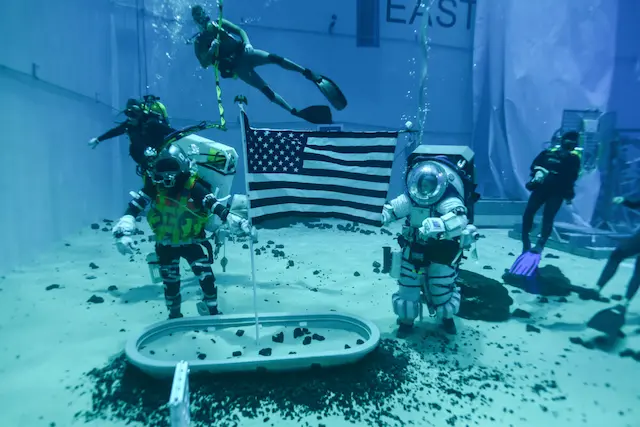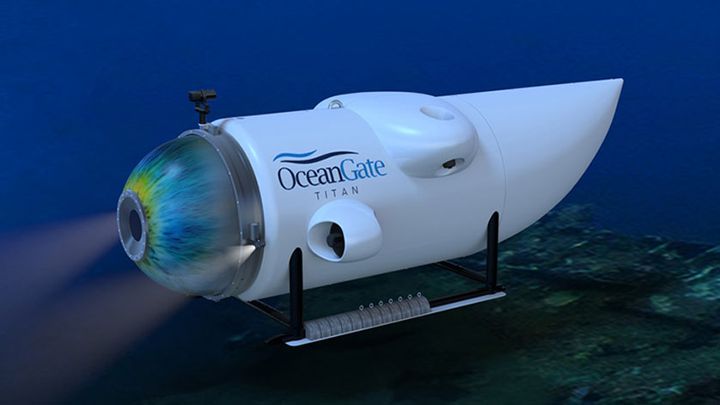Using a massive underwater pool, NASA is getting ready for the upcoming moon landing

NASA's big goal for this decade is to have humans return to the moon. But before that can happen, they must prepare the astronauts, who will be the first humans to set foot on the moon since 1972. Moreover, a massive underwater replica of the moon's environment would be an excellent way to simulate the moon's atmosphere.
That's precisely what is happening at NASA's Neutral Buoyancy Laboratory (NBL) in Houston, which is located in Texas. The National Best Lap Pool (NBL) is an enormous pool that is 202 feet long and 102 feet wide, with a capacity of 6.2 million gallons of water. Its usual purpose is to train astronauts to perform spacewalks and other tasks that require them to work in microgravity; however, it is currently being converted into a realistic mock-up of the moon's surface.
In addition to sand, rocks, and craters, the NBL's replica of the moon also includes a fake lunar lander and rover. The sand is designed to resemble the lunar regolith, the fine dust covering the moon. The rocks and craters present the astronauts with obstacles and challenges that must be overcome to navigate the moon's surface. The Lander and the Rover are exact copies of the ones that NASA will use in the Artemis program. This program's ultimate goal is to place a woman and a person of colour on the moon for the first time.
Astronauts must wear specialized suits that are both weighted and buoyant to simulate the moon's gravity, which is approximately one-sixth of Earth's. To get around underwater, they use various devices that propel them forward. The lighting system in the pool is designed to recreate the movement of the sun and the shadows it casts on the moon.

The astronauts can better familiarize themselves with the moon's terrain, practice their skills and procedures, and test their equipment and systems by participating in underwater training. Additionally, it assists them in getting ready for any unexpected challenges that may come up during the actual mission.
As part of its preparations for multiple Artemis missions, NASA intends to extensively use the NBL's moon replica over the next several years. In 2024, the first one, Artemis 1, will send an uncrewed Orion spacecraft on a circumlunar mission around the moon. The second mission, known as Artemis 2, will launch an Orion spacecraft with a human crew in 2025. The third one, which will be called Artemis 3, will land two astronauts on the moon's south pole in 2026.
NASA utilizes other facilities besides the NBL to prepare its astronauts for lunar exploration. A Lunar Surface Innovation Consortium is also part of the organization. This consortium brings together professionals from academia, industry, and the government to develop new technologies and solutions for living and working on the moon. In addition, NASA has what's known as a Lunar Terrain Vehicle, a modified electric car designed to replicate the experience of driving on the moon.
NASA has high hopes that it will be able to advance scientific discovery, demonstrate new technologies, and inspire future generations of explorers if it is successful in its mission to return to the moon. The moon is also a stepping stone for deeper space exploration, such as sending humans to Mars. This view is supported by the fact that humans have landed on the moon.
The NBL's replica of the moon demonstrates the inventiveness and originality with which NASA is attempting to achieve its lofty objective. According to Clay Tomlinson, the program manager at V2X, a company that has been contracted to build out the moon replica, the following was told to Space.com: "We are living in a bold time. You can get a sense of that all the way through the center. There is a sense of excitement surrounding the prospect of new adventures and challenges."



